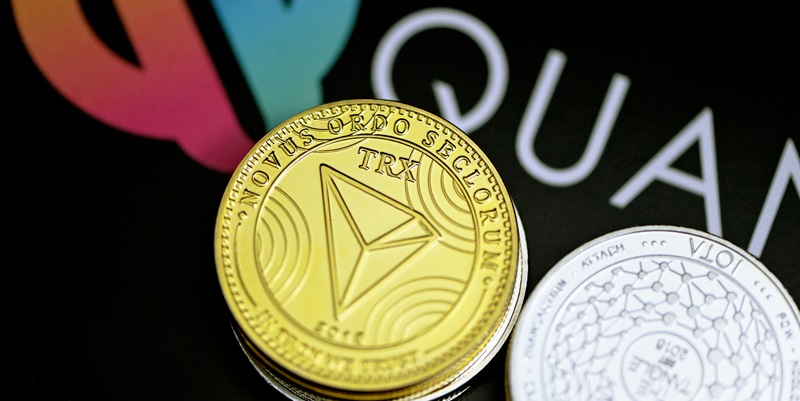In a significant move that could redefine the landscape of blockchain transactions, Tron founder Justin Sun has unveiled a groundbreaking initiative to develop a gasless stablecoin solution. This pioneering concept is aimed at facilitating free peer-to-peer transfers on blockchain networks, potentially opening new doors for corporate adoption and scalability. Sun’s initiative underscores his long-term vision to streamline and elevate blockchain’s integration into mainstream financial operations. Tron’s dominance in peer-to-peer stablecoin transfers offers a solid foundation for this ambitious project. By the end of the year, Sun aims to roll out this gas-free stablecoin on the Tron blockchain, with plans to extend it to Ethereum and other Ethereum Virtual Machine-compatible chains in the near future.
Tron’s Dominance in Stablecoin Transactions
A Leader in Peer-to-Peer Transfers
Tron has already established itself as a formidable player in the peer-to-peer stablecoin transfer market, outpacing even Ethereum in transaction volume according to blockchain analytics firm Artemis. This dominance is largely attributed to its hosting of over $50 billion in Tether’s USDT, highlighting Tron’s significant role and capacity in this niche. This vast network and liquidity provide a robust platform for the introduction and rapid adoption of Sun’s gasless stablecoin initiative. As more companies and users turn toward blockchain for financial transactions, Tron’s significant market share makes it a viable playground for innovative solutions aimed at enhancing user experience and reducing costs.
The utility of stablecoins in the blockchain ecosystem cannot be overstated. They offer a stable alternative to the volatility that cryptocurrencies like Bitcoin and Ethereum are known for, making them a preferable option for businesses seeking to adopt blockchain solutions for day-to-day operations. By eliminating gas fees, Tron could revolutionize the way stablecoins are used, making them far more practical and appealing for a wide range of applications. Removing transaction costs would not only lower barriers for entry but also encourage more frequent and higher-volume transactions. This would effectively make blockchain technology more accessible and attractive to large corporations, financial institutions, and users worldwide.
A Competitive Edge with Gasless Stablecoins
Sun’s decision to cover transfer fees entirely through the stablecoins themselves is particularly innovative, although the exact mechanics of this system have yet to be fully disclosed. This feature alone could catapult Tron’s gasless stablecoin to the forefront of blockchain finance solutions. In comparison, current competitors like PayPal’s PYUSD and Circle’s USD Coin on Ethereum layer-2 Base can offer free transfers, but they do not eliminate gas fees outright as Tron aims to. This competitive edge could compel other blockchain networks to rethink their fee structures and user incentives, driving industry-wide advancements toward more user-friendly platforms.
Sun’s initiative is not just about reducing costs; it’s also about enhancing usability, which could drive mass adoption of blockchain technology. Lowering or entirely eliminating gas fees would simplify blockchain transactions, making them much more comparable to traditional financial transactions in terms of ease and cost. This could be particularly beneficial for cross-border transactions, which often carry high fees and delays in the current financial system. By contrast, a gasless stablecoin could offer near-instant transfers at no cost, providing a compelling alternative. If successful, this could pave the way for broader adoption of blockchain for both personal and corporate financial transfers, significantly advancing the mainstream integration of blockchain technologies.
Expanding Horizons: Bitcoin Layer-2 Solution
Enhancing Bitcoin’s Usability
Tron’s gasless stablecoin project is not Sun’s only ambitious plan. The blockchain giant is also exploring the development of a Bitcoin layer-2 solution to support a wrapped version of Tether. This move could funnel substantial funds into the Bitcoin ecosystem, further enhancing its liquidity and usability. Layer-2 solutions are designed to improve the efficiency and scalability of blockchain transactions without compromising on security. In this case, wrapping Tether on a Bitcoin layer-2 would allow users to transact in BTC with the stability of USDT, thereby merging the best of both worlds.
The anticipated Bitcoin layer-2 solution underscores Tron’s broader strategy of transcending single-chain dominance and extending its innovative capabilities to other leading blockchain ecosystems. By doing so, Tron aims not only to absorb more liquidity but also to offer enhanced functionalities across multiple platforms. This cross-chain compatibility could ultimately result in a more interconnected and robust blockchain environment, encouraging more users and institutions to engage with decentralized technologies. The development of a Bitcoin layer-2 solution reflects a long-term vision for a more versatile and inclusive blockchain landscape, driven by Tron’s relentless pursuit of technological advancement.
Strategic Responses to Industry Dynamics
Tron has firmly positioned itself as a key player in the peer-to-peer stablecoin transfer market, surpassing Ethereum in transaction volume, as per blockchain analytics firm Artemis. This achievement is largely due to its hosting of over $50 billion in Tether’s USDT, underscoring Tron’s critical role and capacity in this niche. The network’s extensive liquidity and infrastructure create a solid platform for the swift implementation of Sun’s gasless stablecoin initiative. As more businesses and individuals turn to blockchain for financial operations, Tron’s substantial market share presents it as an ideal ground for innovative solutions aimed at enhancing user experience and reducing operational costs.
The utility of stablecoins in the blockchain ecosystem is immense. They provide a stable alternative to the highly volatile cryptocurrencies like Bitcoin and Ethereum, making them a preferred option for businesses looking to integrate blockchain into their daily operations. By eliminating gas fees, Tron could revolutionize stablecoin usage, making them significantly more practical and attractive for various applications. Removing transaction costs would lower entry barriers and encourage more frequent, higher-volume transactions, thus making blockchain technology more accessible and appealing to corporations, financial institutions, and users globally.

